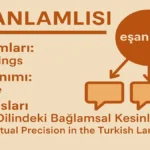Searches for “Umineko time travel” often reveal a deeper desire to understand one of the most cryptic, layered narratives in visual novel history. Written by Ryukishi07, Umineko no Naku Koro ni (When the Seagulls Cry) is not a time travel story in the conventional sci-fi sense. There are no DeLoreans, time machines, or physical jumps between centuries. Instead, Umineko deploys metafictional devices, narrative recursion, and memory loops to simulate the effect of time travel, challenging the reader’s perception of causality, consequence, and chronology.
In the first 100 words, it’s critical to clarify: Umineko does not involve literal time travel. However, it crafts a world where characters seem to experience parallel timelines, alternate realities, and eternal returns. Through the use of a layered narrative structure and magical realism, it offers an experience that mimics the philosophical and emotional weight of time travel. This article examines how Umineko uses literary and narrative devices to evoke the sense of looping time, fractured timelines, and the recursion of trauma and hope.
The Structure of Umineko: Fragmented Realities and Narrative Layers
Unlike a linear mystery or fantasy, Umineko operates on multiple levels simultaneously:
| Narrative Layer | Description |
|---|---|
| Gameboard Layer | Each episode plays out as a separate “world” or scenario on a fictional board. |
| Meta-World | Characters like Battler and Beatrice observe and critique the gameboard. |
| Reader Layer | The audience is implicated in decoding the mystery and truth of events. |
These overlapping dimensions create a recursive reading experience. Episodes restart with different outcomes, the same characters die in new ways, and the central mystery is reframed repeatedly.
Is It Time Travel or Narrative Recursion?
While some readers equate this with time travel, what’s really happening is a metafictional cycle. Characters do not move backward in time per se; instead, the same events are “replayed” in alternate configurations. This resembles:
- Rashomon-style reinterpretation: Different perspectives on the same events.
- Schrödinger’s narrative: Truth exists in a state of quantum uncertainty.
- Nietzschean eternal recurrence: The idea that life repeats itself infinitely, but with potential variation.
Thus, “time travel” in Umineko is philosophical and metaphysical, not mechanical.
Battler, the central figure of Umineko, undergoes an evolution that mirrors a time traveler’s quest. With each episode, his memory, understanding, and beliefs evolve:
- In Episode 1, he is clueless and skeptical.
- By Episode 4, he begins to confront the metaphysical mechanics of the gameboard.
- In Episode 5 and 6, he takes control of the narrative structure.
- By Episode 8, he becomes the architect of truth.
Memory functions as a surrogate for time travel: Battler doesn’t go back in time, but retains emotional and cognitive continuity across timelines, giving him the power to alter outcomes.
The Role of Beatrice: A Temporal Trickster
Beatrice serves as both antagonist and guide. Her magical presence challenges Battler to solve the mystery of Rokkenjima without relying on magic. Her role is paradoxical:
- She constructs the repeating gameboard.
- She erases memories and reconfigures events.
- She traps characters in narrative loops.
Though Beatrice isn’t a time traveler, her manipulation of causality and perception places her functionally in that role. She controls the reality loop in a way that mimics timeline control.
The Repetition Motif: Loops as Storytelling Devices
Each of Umineko’s eight episodes replays the Rokkenjima incident with altered circumstances. These loops are not presented as alternate timelines, but rather as constructed “games” for Battler to solve.
| Episode | Key Distinction |
| Episode 1 | Introduces the murder mystery; minimal magic. |
| Episode 2 | Beatrice’s magic world begins to emerge. |
| Episode 3 | Rise of Eva-Beatrice; focus on identity. |
| Episode 4 | Battler’s resolve and Ange’s involvement deepen the meta-layer. |
| Episode 5 | Erika appears; shift to formal courtroom logic. |
| Episode 6 | Battler as Game Master; explores truth and sacrifice. |
| Episode 7 | Flashback to the origin of the Golden Witch. |
| Episode 8 | Closure, resolution, and synthesis of all layers. |
The loops are designed to simulate the act of revision, re-examination, and rediscovery. In a way, Umineko’s structure replicates how historians “travel through time” by interpreting records and piecing together competing narratives.
Ange and the Personal Cost of Recurrence
Ange, Battler’s younger sister, represents the pain of being outside the loop. She does not experience the repeated Rokkenjima games directly but instead suffers the consequences in a single unchanging future. Her arc is about acceptance:
- She seeks the truth about her family.
- She enters the meta-world briefly to understand her brother’s trials.
- Ultimately, she chooses to let go of the truth to preserve meaning.
Ange’s journey is deeply temporal: she carries the burden of the past while being powerless to change it, a central theme in any serious time travel narrative.
Witch and Human Truth: Dual Timelines of Belief
A critical aspect of Umineko is its dual-truth system:
- Witch truth: Events explained by magic and fantasy.
- Human truth: Rational explanations grounded in physical reality.
These run parallel to each other. Neither is confirmed absolutely; rather, the reader chooses which “timeline” to believe. The experience mimics time travel’s central question: Can the past be changed, or only reinterpreted?
Reader as Time Traveler
In traditional stories, time travel is restricted to characters. In Umineko, the reader functions as the time traveler:
- You witness the same events repeatedly.
- You develop memory, context, and interpretive tools.
- You influence the narrative through your beliefs.
By the time you reach Episode 8, your understanding of the characters, setting, and truth has evolved dramatically. This recursive knowledge is identical to what a time traveler experiences: seeing the same moment with fresh insight.
Key Symbols and Themes That Resemble Time Travel
| Symbol or Concept | Time Travel Parallel |
| Epitaph Puzzle | Triggers the repetition of events; a temporal cipher |
| Golden Land | A timeless utopia outside the flow of history |
| Meta-Courtroom | A space outside of time where narratives are judged |
| Red and Blue Truths | Mechanisms for locking or unlocking narrative timelines |
| Fragments | Each fragment is a separate world or timeline |
These motifs establish Umineko as a narrative where time is not linear but recursive and fluid.
Comparisons with Other Time Travel Works
While Umineko avoids direct chronological travel, its themes align with:
- Steins;Gate: Alternate timelines and consequences of knowledge.
- Re:Zero: Looped timelines with memory continuity.
- The End of Evangelion: Nonlinear storytelling and alternate endings.
- Cloud Atlas: Lives recurring across timelines with thematic echoes.
These comparisons underline how Umineko earns its place in the canon of temporal storytelling, even without using traditional sci-fi tropes.
Interpretive Freedom: Your Timeline, Your Truth
Perhaps Umineko’s most powerful tool is ambiguity. It does not confirm a singular truth. Like a time traveler waking in a different version of the past each time, the reader is left to:
- Piece together fragmented narratives.
- Weigh fantasy against realism.
- Choose emotional resonance over factual certainty.
This is a radical form of narrative time travel: not through plot, but through epistemology. Truth is not discovered; it is constructed.
Educational Implications: Teaching Time Through Fiction
Umineko offers educators a chance to explore complex ideas:
- The philosophy of time
- Narrative structure in postmodern literature
- The ethics of memory and trauma
These lessons are often more impactful than abstract theory, as Umineko grounds them in character, emotion, and compelling mystery.
Final Thoughts: Why Time Travel Matters in Umineko
The interest in “Umineko time travel” is ultimately a reflection of the work’s philosophical ambition. It doesn’t need time machines to ask time travel’s essential questions:
- Can understanding the past change the present?
- Do repeated experiences deepen truth or dilute it?
- Is memory a more powerful vehicle than technology for crossing time?
Umineko answers with nuance: Time doesn’t rewind, but meaning evolves. And in that evolution, perhaps, lies the only kind of time travel worth having.
FAQs
1. Does Umineko no Naku Koro ni actually involve time travel?
No, Umineko does not feature literal time travel. Instead, it uses narrative loops, alternate scenarios, and metafictional storytelling to simulate the feeling of temporal recursion, creating a philosophical exploration of time, memory, and truth.
2. Why do people associate Umineko with time travel?
Because the story repeatedly resets its timeline across episodes with evolving outcomes, characters gaining knowledge, and changing narrative layers, it feels like the characters and reader are reliving different versions of the same past—mimicking time travel.
3. How do the narrative loops in Umineko differ from traditional time loops in fiction?
Unlike time loops that involve the same characters reliving a day or event (e.g., Groundhog Day), Umineko presents new “gameboards” in each episode. These aren’t rewinds but alternate realities with shifting rules and truths.
4. Who in Umineko experiences the time-like progression most directly?
Battler and, to some extent, Ange. Battler retains an evolving awareness across the episodes, akin to temporal memory. Ange, though outside the loops, experiences the emotional consequences of events from the “final” timeline.
5. Is the concept of “fragments” in Umineko related to time travel?
Yes—in a symbolic sense. Fragments represent different versions of reality or timelines. By navigating these, characters explore what could have happened, much like alternate timelines in time-travel fiction.











